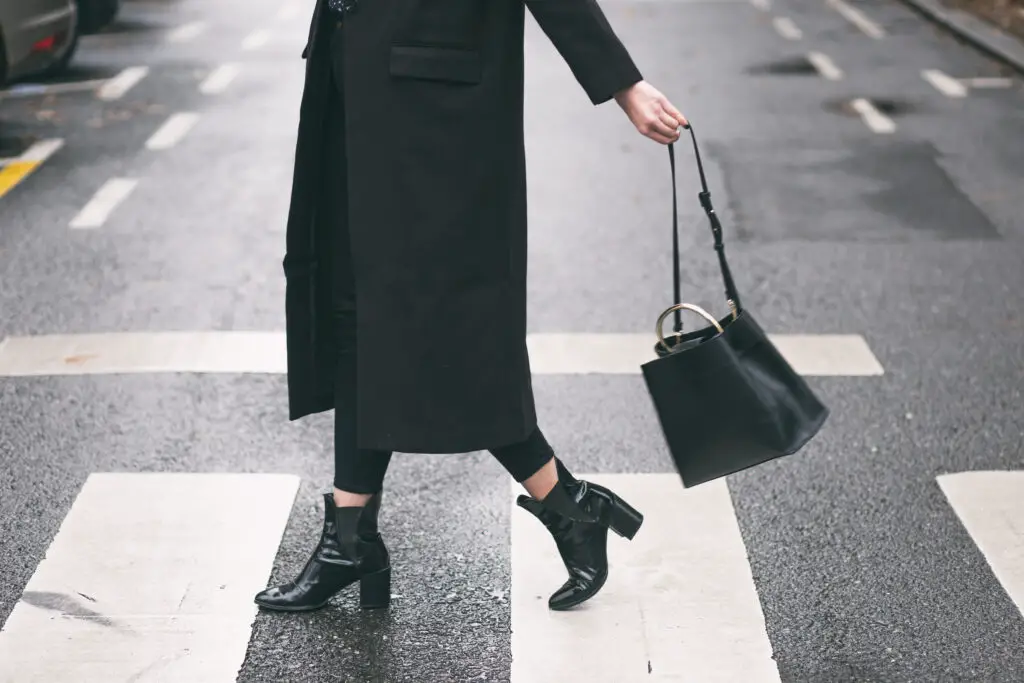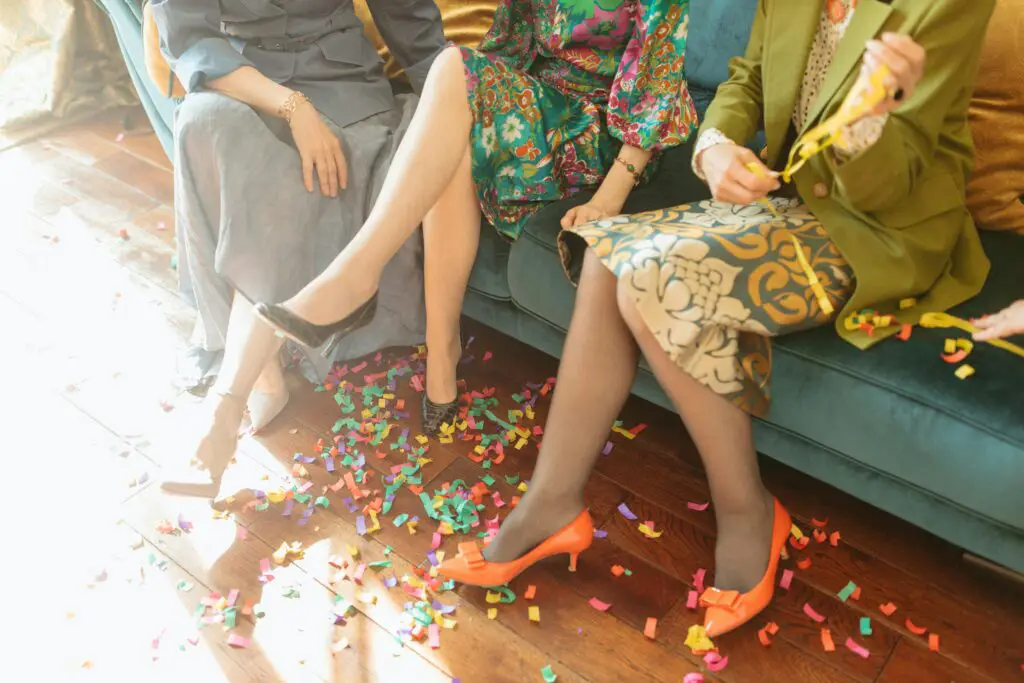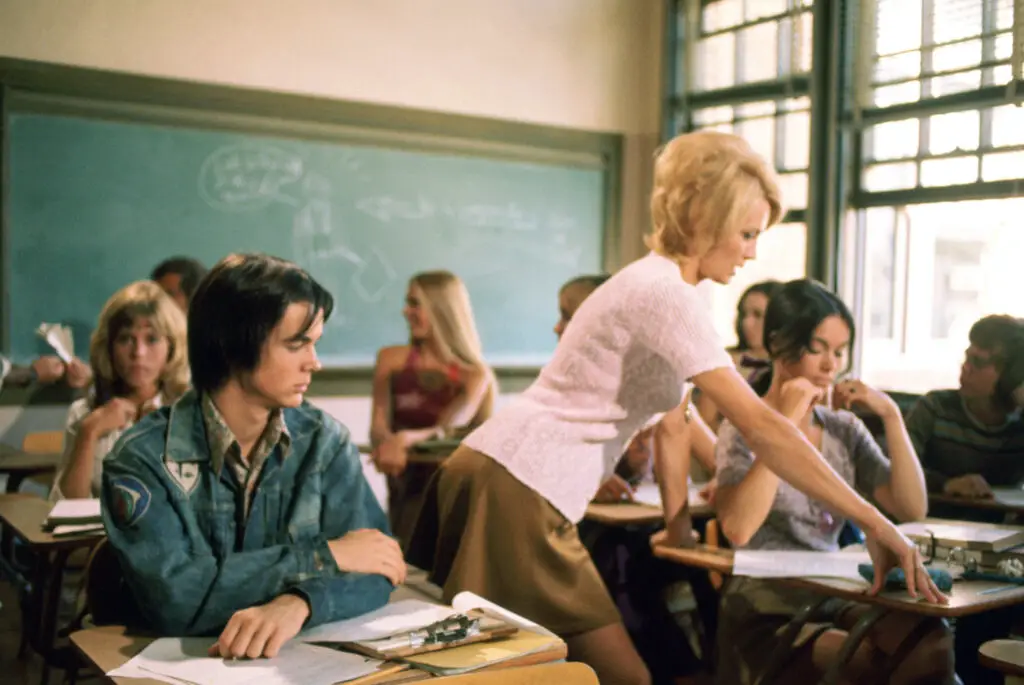1. Matching Your Purse to Your Shoes

Back in the ’70s, women were practically trained to match their shoes and handbags. If you wore brown pumps, you’d better have a brown leather handbag to go with them, or you were clearly “off.” It wasn’t just a tip, it was an expectation, and not following it could make you look like you didn’t know the first thing about style. That kind of rigid uniformity sucked the fun out of getting dressed.
These days, clashing textures and colors is considered cool and intentional. You could wear red sneakers and a turquoise tote and be applauded for your boldness. But in the ’70s, you’d probably get side-eyed at the grocery store. It was the kind of unspoken rule that could make you feel instantly out of place in a room full of polyester perfection.
2. Never Wearing White After Labor Day

This one was treated like gospel. Wearing white after Labor Day was seen as a tacky misstep, even though no one could really explain why. It didn’t matter if it was a crisp white blazer or a stunning winter coat, if it was after September, you were pushing your luck. People would quietly whisper behind your back at brunch if you dared to break the rule.
Now, of course, winter whites are all the rage. But in the ’70s, it could mean the difference between being seen as classy or clueless. Fashion was about conformity more than personal flair. If you weren’t playing by the calendar, you risked being dropped from the invite list.
3. Heels Were Practically Mandatory

Flats were for casual errands, and sneakers were for gym class. If you were going anywhere even remotely social, you were expected to wear heels—often towering and uncomfortable ones. Even workplace dress codes reinforced the idea that femininity equaled added height. You could be perfectly put-together, but without heels, you were considered underdressed.
This pressure pushed a lot of women into aching feet and poor posture, just to keep up appearances. Platforms were especially tricky to walk in, but they were everywhere. The idea of comfort being stylish hadn’t hit yet. If you showed up in flats, people assumed you either didn’t care or didn’t get it.
4. Hosiery Wasn’t Optional

Bare legs were borderline scandalous unless you were on a beach. Women were expected to wear pantyhose or tights with skirts and dresses, no matter how hot it got. It was about appearing “polished,” even if your legs were sweating through nylon. Going without was seen as lazy or rebellious—not in a good way.
Pantyhose even came in odd, unnatural shades meant to give the illusion of perfect legs. If you had a run in your tights and didn’t have a backup pair, you were in social trouble. It wasn’t about comfort—it was about control. And it added one more layer of stress to getting dressed every day.
5. Never Mixing Prints

Wearing polka dots with stripes? Absolutely not. The ’70s had a surprisingly rigid view on clashing patterns, despite all the psychedelic colors floating around. You had to choose your prints carefully, and if you wore more than one, they had better coordinate or you’d look like you got dressed in the dark.
It sounds harmless, but messing this up could draw real judgment. People would cock their heads and offer unsolicited advice like, “That’s…a lot going on.” Fashion freedom didn’t quite extend to patterns. You were supposed to be creative—but only within very tight guidelines.
6. Denim on Denim Was a Don’t

Today we call it a Canadian tuxedo and wear it with pride, but in the ’70s, doubling up on denim was considered overkill. You might get away with jeans and a chambray shirt if you were going for a western vibe, but even then, you had to be careful. Denim was viewed as too casual to wear head-to-toe unless you were working outside or going to a concert.
Fashion magazines warned against it, and trendsetters often looked down their noses at anyone who dared try it. Denim jackets were fine, but you were supposed to pair them with slacks or a skirt—not more denim. Now we know better, but back then, wearing all denim could make you feel like you were breaking an unbreakable rule.
7. Always Dressing “Age Appropriate”

There was this unspoken boundary between what teens, twenty-somethings, and “mature” women were allowed to wear. A woman in her 40s showing up in a miniskirt or crop top was considered trying too hard. The fashion police—aka your friends, coworkers, and even family—were quick to judge. Everyone was expected to dress their age, not their mood.
This created an unnecessary sense of shame around self-expression. You could love a look and still feel forced to pass it by because of how it might be perceived. Being stylish was about fitting into a demographic box. It wasn’t until later that we started embracing the idea that fashion has no expiration date.
8. Daywear and Evening Wear Had Clear Lines

In the ’70s, there was a firm distinction between what you wore during the day and what was considered “evening appropriate.” You wouldn’t be caught dead wearing sequins to lunch or a casual jumpsuit to dinner. The idea of transitioning your look from day to night was more stressful than stylish.
If you didn’t change clothes before heading out for an event, it was seen as lazy or unrefined. Wardrobe changes were expected for everything from cocktails to dinner parties. Now we mix high and low with ease, but then, the rules were carved in stone. And heaven help you if you forgot your wrap or heels for the evening—it was social suicide.
